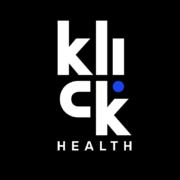Personalization, privacy, and health – get ready for a shift
By Kent Groves, VP, client leadership group, Merkle Health
For years, pharmaceutical marketers have observed rapidly shifting industry trends. To say that the agenda and role of the consumer is changing is an understatement, particularly as we see patients, caregivers, and healthcare professionals consuming and generating more digital media than ever before. The critical determination is that pharma must change the way it speaks to and engages with its audience.
For relevant pharmaceutical messaging, the key elements are the channel (tactic), the timing (cadence or frequency), the mix (let’s call it attribution), the content, and most importantly, our willingness to adjust all of them in real time. Historically, this insight has been known, relational, and tied back to the individual. In other industries, this has served the development of personalized and targeted programs that meet the needs of individuals. With the rapid expansion of digital consumption, one of the fastest-growing foundations of insight is the access to and creation of a wealth of consumer data across multiple devices. The opportunity to create competitive advantage through the delivery of targeted, personalized customer experiences across multiple channels is the driving force that enables customized experiences. By leveraging this approach, we can cost effectively figure out to whom and how we should offer relevant, personalized, digital experiences.
Personalization manages the conversation of optimized content relevant to the customer journey. It integrates channel and media, uses explicit and implicit data, and converses with anonymous and known consumers. Personalization can include customizing existing content, such as changing the message, offer, device, creative, and timing. It can also be implemented in many formats, such as through call centers, emails, direct mail, apps, paid media, and websites, and can use both customer-driven and market-derived data.
Customer identification, even partial, is not necessary to serve personalized content to consumers. A high level of personalization can be accomplished with anonymous data, a concept especially important in the pharmaceutical world. Where mailing addresses and phone numbers were once key, Facebook, Google, and Pinterest IDs are now able to provide marketers with an abundance of insight.
The popular press has suggested the health-related data shared by individuals on social media sites such as Facebook and Twitter is more current and accurate than what they share with insurers and doctors. While research to support this premise is growing, the insight and discussion can perhaps lead to a curious juxtaposition, namely, less privacy may equal better health.
This is an interesting theory that has the potential to really set the tone for the latter half of this decade and beyond. It might take a couple minutes to wrap your head around the concept, but the essence of the logic is grounded in three fundamentals.
• Consumers are more likely to make links and posts on social media that accurately reflect their health than they do in discussions with their physicians, employers, and insurers. Similar to the concept of patient-reported outcomes, they are discussing their health through their digital and virtual footprint, rather than through an exchange with their physician. Rapid adoption of tracking tools like FitBit (7 million wearables were shipped in Q1, 2014) quantifies the discussion and validates the posting.
• Addressability at Scale is enabled through the application of data and analytics to the digital audience marketplace. In effect, by using addressability to link “patient postings and reported outcomes” to appropriate socio-demographic segments, we increase our ability to target relevance and experiences across the customer (patient) lifecycle. The key is that we are leveraging both known and anonymous, widely available digital activity, to effect more relevant messaging and validate therapeutic decisions and their subsequent reported outcomes. Additionally, the derived insight is not just related to the patient, but the patient’s household, social connections, support network, and associated caregivers – all of whose social/digital activity can be evaluated and subsequently targeted with relevant, high-value messaging.
Consumers are experiencing the digitization of everything, social networking at scale, combined with mobility and being “on,” 24/7. Additionally, with the adoption of digital media accelerating at a frenetic pace, they are shifting their patterns of media consumption and adjusting their personal behaviors in all areas of their daily lives. None are more obvious than their move from simple involvement in their health to full-on engagement and self-empowerment.



![shutterstock_1959561142 [Converted] patient voice](https://www.pharmalive.com/wp-content/uploads/2023/11/amplify-voice-180x180.jpg)



